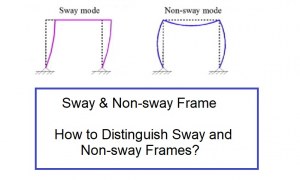🕑 Reading time: 1 minute
Strength, resistance against failure is the important property of any civil engineering material. Every material is to be tested for its strength before going to use it. There are various external forces which acts on materials in different ways. To calculate a material strength, some assumptions are to be considered which helps the material for its safe design strengths. The assumptions are discussed below.Contents:
Assumptions in Strength Calculation of Building Materials
The following assumptions are made in strength calculation of structural analysis.- The material is a solid continuous structure.
- The materials is homogeneous and isotropic in nature.
- Self-weight of the material should be neglected.
- Principle of superposition is considered as valid.
- Principle of St. Venant’s is considered as valid.

Explanation of Assumptions
Material is Continuous
In general, materials whether it may be solids or liquids or gases are formed by group of molecules. When we observe these molecules through microscope, they are separated by spaces which are called voids or cracks. Hence, in general material is not in continuum. But to find the strength of a solid material, the material should be considered as continuum which means it has no voids or no cracks in it.The material is homogeneous and isotropic in nature
A material is said to be homogeneous, if it contains same material in all its parts. In other words, if a material has same properties at any point in one direction it is called as homogeneous. Wood, iron etc., are examples of homogeneous materials. A material is said to be isotropic, if it has same properties in all directions at any point. Almost all fine grained materials like iron, steel, gold etc. are example for isotropic materials. The material is both homogeneous and isotropic when it has same properties at any point and in any direction.
Selfweight is Neglected
The self-weight of material is not considered or neglected to calculate its strength. The material will not undergo any deformation due to its self-weight so, the internal forces developed in the material prior to loading is considered as zero. The stress stain curve for mild steel starts from origin only when the self-weight is neglected.
Principle of Superposition is Valid
Principle of super position states that, “the net effect caused by a group of external forces is equal to the algebraic sum of the effects caused by each of the individual loads”. But this law is valid up to some limitations and those are · The material should be linearly elastic which means it obeys Hooke’s law. The loads applied should be considered up to proportionality limit beyond that principle of superposition is not valid. · It is valid if the deformations caused by loads are very small. So, it is not valid for long columns, deep beams etc.
Principle of St. Venant’s is Valid
If there is a sudden change in the cross section of a material, the stress distribution is not uniform throughout the section. To maintain uniform stress distribution the material should be of uniform cross section or gradually changing cross section.


